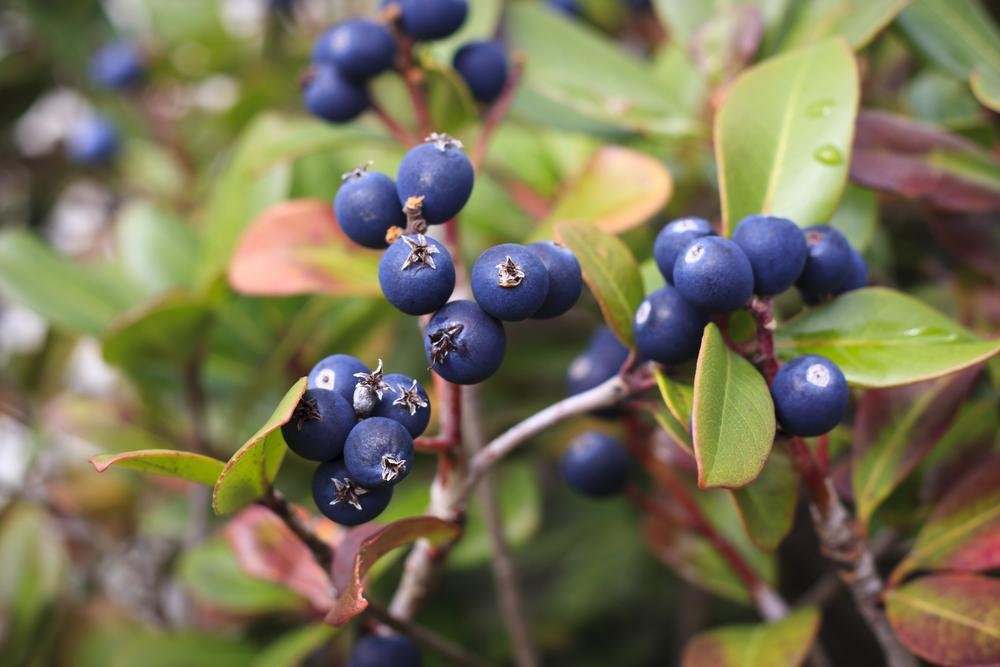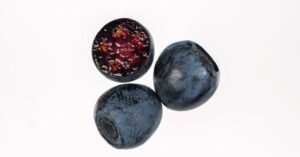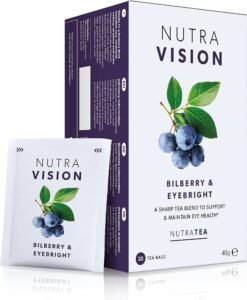Bilberry Protects Vision and Relieves Eye Fatigue

Pigment is Bilberry’s Power
Bilberry (Vaccinium myrtillus) is the wild, European relative of the blueberry (Vaccinium sect. cyanococcus). It’s a darker blue than blueberry, its inner flesh is red, not green, and it has a stronger, more acidic taste. Bilberry’s intense coloration is due to its extremely high anthocyanin content, the highest of any berry; Bilberry has 300-700 mg of anthocyanin per 100 g of berries, compared to blueberry’s 82.4 mg per 100 g. Anthocyanins improve blood circulation around the eye, scavenge free radicals, and lower inflammation. Thanks to its abundant anthocyanins and vitamin C, bilberry protects vision and can help treat retinopathy, macular degeneration, cataracts, normal tension glaucoma, chronic dry eye, screen-related eye fatigue, and diabetic eye diseases.
Anthocyanins
Improve Circulation
Anthocyanins are plant pigment compounds that build healthy blood vessels and improve blood circulation throughout the body.
From the Greek anthos for flower and kyanose for blue, anthocyanins can appear red, purple, blue, or black. They have an affinity for eye and vascular tissue, and effectively protect the retina and improve the flow of oxygen-rich blood around the eye. Bilberries can prevent and improve visual function in people with normal tension glaucoma (NTG). NTG is characterized by damage to the optic nerve and visual field despite normal intraocular pressure. No one is positive what causes NTG, but many ophthalmologists theorize that damage to blood vessels leading to poor circulation is a major cause.
Absorb Free Radicals
Bilberries contain two antioxidants: anthocyanins and vitamin C. Antioxidants scavenge free radicals. Cataracts and macular degeneration have been traced to damage from free radicals. So, it makes sense that bilberries prevent and reverse cataracts and macular degeneration. In a study on office workers with eye fatigue from prolonged staring at computer screens, symptoms like ocular pain, eye heaviness, discomfort, and foreign body sensation were alleviated by long-term bilberry supplementation. Bilberry relieves chronic dry eye by improving the aqueous layer of the tear film and increasing tear secretion. Furthermore, by increasing production of rhodopsin, a pigment that improves night vision, anthocyanins help the eye adapt to changes in light.
Benefits for People with Diabetes
Having high blood glucose levels that induce oxidative stress and inflammation is the leading cause of diabetes. Diabetes is associated with a group of eye diseases, including diabetic retinopathy, diabetic macular edema, cataracts, and glaucoma. Bilberries are anti-hyperglycemic, lowering blood glucose levels. They also exhibit antioxidant, anti-inflammatory activity. Thanks to these properties, bilberry can help prevent and treat diabetes-related eye diseases.
NutraVision Tea Blend
Herbalists at NutraTea created NutraVision: a blend of bilberries with eyebright (Euphrasia officinalis) and green tea (Camellia sinensis). These three herbs work together to support healthy vision. Eyebright is a traditional anti-inflammatory, anti-microbial remedy for eye infections. Green tea has powerful antioxidant activity. This blend helps sustain optimal sight and facilitates the circulation of oxygen and blood around the eyes while easing irritation and strain from fatigue. Bilberry is a powerful ally in protecting your vision, and anthocyanins are their secret weapon. Enjoy a daily cup and give your eyes some love. NutraTea teabags are of such high-quality that each bag can be reused up to three times daily.



